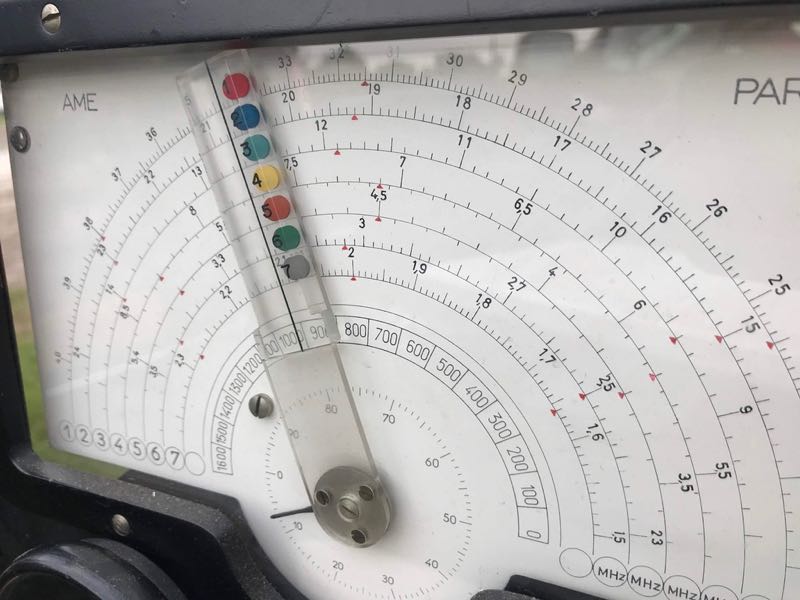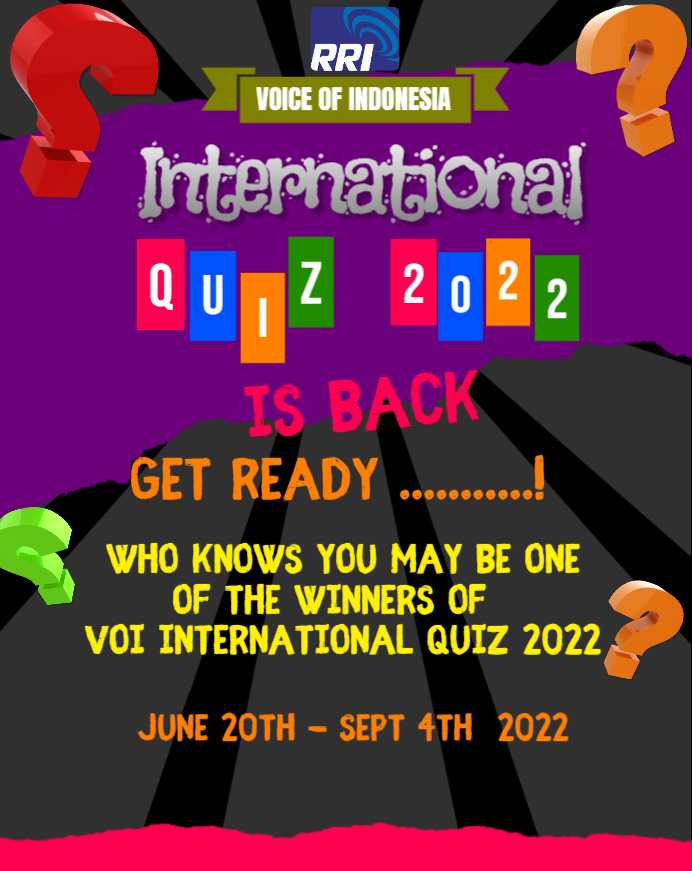Radio Waves: Stories Making Waves in the World of Radio
Welcome to the SWLing Post’s Radio Waves, a collection of links to interesting stories making waves in the world of radio. Enjoy!
Opinion: The Future of AM Radio
England, Scotland, Wales and Northern Ireland (FrequencyFinder.co.uk)
Summary
AM radio in the British Isles is now in terminal decline with audiences dropping and many transmitters closed already. The majority of the remaining transmitters will likely close by the end of 2027. Over the next few years, the BBC and major commercial broadcasters will be looking to minimise their AM transmission costs by reducing transmission powers at the high-power sites and closing some of the low-power transmitters serving small audiences.
A coordinated AM shutdown may then follow at some point, most likely in 2027, though some independent broadcasters may continue using AM beyond this. This article explores these issues in more detail.
Click here to download the full PDF of this article.
The Last Word – The BBC and Nuclear War (Atomic Hobo Podcast)
This episode of the Atomic Hobo podcast focuses on the role of the BBC before and after nuclear attack:
https://soundcloud.com/user-494087291/the-last-word-the-bbc-and-nuclear-war
Click here to listen via Soundcloud.
SAQ unable to air on Alexanderson Day (The Alexander Association)
Note: the The Alexander Association has announced that they will be unable to put SAQ on the air this year on Alexanderson Day. There are no more details other than the title of their post (the content still reads as if the transmission will happen as planned).
Check the Alexander Association website for more details.
ITU’s ham radio station celebrates 60 years on air (ITU)
By Nick Sinanis, callsign SV3SJ, President of the International Amateur Radio Club (IARC), and Attila Matas, callsign OM1AM, Vice-president and Station Manager, IARC
Did you know that the United Nations specialized agency for information and communication technologies owns and operates its very own radio station?
Residing at the headquarters of the International Telecommunications Union (ITU), the 60-year-old amateur station operates under the callsign 4U1ITU.
It started broadcasting on 10 June 1962 and was officially inaugurated the following month by then UN Secretary-General U Thant and ITU Secretary-General Gerald Gross – himself a ‘’ham” radio enthusiast known by the personal callsign W3GG.
Recognized as a unique “country” in the ham radio community, 4U1ITU operates in accordance with privileges extended by ITU and the Government of Switzerland. It has also earned the DXCC (or ham radio “century club”) award from the American Radio Relay League (ARRL), confirming air contacts with 100 or more countries.
From its long-time home on the 5th floor of the Varembé Building in Geneva’s international district, this unique broadcasting outlet still today serves as a model for the highest standards of amateur radio station operation everywhere.
From one to a million
4U1ITU’s first contact, or “QSO” in ham radio parlance, was made with a German station called DL4VK. Further QSOs followed, amounting to over 1,300 contacts worldwide in the first 24 hours.
In the six decades since, ITU’s radio station has made over a million contacts using Morse code carrier wave (CW), voice (SSB), and digital operational modes, based on more than 20,000 two-way QSOs with radio amateurs around the world.
4U1ITU can operate on most of the frequency bands allocated to amateur and amateur-satellite services as identified in Article 5 of the Radio Regulations.
Aside from letting licensed radio amateurs in ITU, its Member State representatives, and its conference and meeting delegates contact fellow radio hams, the station promotes international goodwill and cooperation across the community. It also allows hands-on demonstrations of amateur radio communications for delegates and meeting participants. [Continue reading…]
RRI Voice of Indonesia: International Quiz 2022
Do you enjoy the SWLing Post?
Please consider supporting us via Patreon or our Coffee Fund!
Your support makes articles like this one possible. Thank you!




Re: UK switching off AM
The exact opposite is the case in Australia, with AM radio stations at the top of the ratings pretty consistently, and still very popular. For emergency broadcasting, all ABC radio transmitters in capital cities broadcast at 50kw watts and some regional transmitters still do also, but most are 10kw or less.
ABC Radio Adelaide on 891KHz covers the vast majority of the state’s population in the daytime and the whole state at night. At night it can even be heard easily in Indonesia and other south east Asia countries (along with some of the transmitters in the Kimberly region of Western Australia with far less power).
These huge transmitters are vitally important for travellers and residents a like, I know some towns in South Australia where 891 provides better reception than the local ABC (in Tumby Bay for example, 1485 at Port Lincoln and 693 at streaky bay aren’t as strong as 891 from across the water at Adelaide).
There is an interesting history lesson on 6WF (720KHz) on YouTube here:
https://youtu.be/ZfhVejWr8rQ
(this video might deserve it’s own swling post actually)
I feel compelled to mention that here in the USA the exact opposite is happening with the FCC (under Ajit Pai) deciding to weaken or remove co- and adjacent-channel interference rules where they won’t conflict with other countries (mainly Canada & Mexico).
This is despite the declining listeners there and Canada eliminating most AM transmissions.
Mike,
HD radio is the worst offender because in the AM and the FM bands the digital signals are in the adjacent channels which causes interference to other broadcasters. The only broadcasts which fit within their channel is low data rate all digital HD in the AM band. The sound quality is poor of that digital signal because of the low data rate and inefficient sound compression.
>When is the UK going to convert to DAB+?
Ahem, it did in 2016 !
This year I dumped my two DAB receivers.
Fed up with lousy battery life, what a waste of time.
Never again will I waste time with digital radio.
Arthur,
Now portable DAB+ radios all contain rechargeable batteries. The sensitivity of these radios has also improved. In addition much more energy efficient chips have been manufactured. DAB+ started high powered DAB+ broadcasts in Australian all major cities in 2009. Fortunately we have never had DAB.
I have been using a https://www.amazon.co.uk/Digital-Bluetooth-Internet-Portable-Display-default/dp/B08LDKQBBZ/ref=sr_1_132?crid=2XJ4Z5V6KGLQB&keywords=dab+radio+portable&qid=1655688020&rnid=1642204031&s=electronics&sprefix=DAB%2Caps%2C388&sr=1-132 which uses a USB charger and can charge and receive programs at the same time. It also has a colour display for any images broadcast.
The transmitters for DAB and DAB+ are identical. It is only the error correction and the more efficient audio compressor are the differences at the transmitter end. All of this happens in an encoder which is at the input of the transmitter. In 2016 a new national UK network was rolled out but only 3 of the programs were in DAB+. There is now supposed to be 140 programs in DAB+. Many are on local area low powered transmissions. Which is what I complained of.
In the early 90’s I went to Montreux few times, for the summer ITS . On one occasion I went to Geneva to visit 4U1ITU club station. I don’t recall why I couldn’t transmit, either I didn’t apply for a permit before hand or may be it was for stuff only… The station itself didn’t impress me, the antennas did.
* I do have few QSL’s from the 80’s
I should add the following;
DAB(+) and DRM do not transmit a carrier, they transmit a few fixed pilot tones which the receivers use for automatic fine tuning and for automatic gain control to prevent front end overload. All digital HD radio in the AM band still contains the wasteful carrier.
The telcos in 1st world countries switch off the oldest technology every 8 years. So a phone will only ever work for 16 years, before it doesn’t have a base station to talk to! So why is the broadcast industry not trying to keep up with tier.
Lastly the BBC has found that the least amount of carbon dioxide used to send a program to a large audience is to use DAB, the mobile broadband produces more because it has to send the program to individual phones and the worst is AM. They did not test DRM, its low power consumption and ability to cover whole continents needs analysis.
UK Switching off AM.
What is not mentioned is that the transmitter power is the output of the transmitter when transmitting silence. This is the carrier power and it contains no information or sound. So when transmitting program the output power increases to 150 %. The carrier is used to bias a diode detector.
When is the UK going to convert to DAB+? The sound quality including mono music programming is worse than FM. Also when the DAB signal is full of error it sounds like bubbling mud where as the improved error correction of DAB+ produces good sound and as the signals become less reliable the receiver mutes. DAB+ in Australia carries 18 stereo programs per transmitter thus even more economical. Remember that an FM transmitter can only carry one program making it expensive.
In 2017 Norway had no AM and they switched off FM over a year. Within 12 months ratings returned to previous levels.
I disagree with the use of DAB(+) for local area broadcasting because to use 1.5 MHz bandwidth for a few programs is wasteful, so the power must be very low to prevent interference because receivers can only tune 32 transmission channels. A better option is to use DRM in band 1 (47 – 68 MHz) where channels are only 100 kHz wide making up to 207 channels available. In addition transmitters can carry 6 channels which can carry 18 good quality stereo sound channels and there is data available for images an Journaline text.
DAB+ and Digital Radio Mondiale have identical signal processing except that DRM has a more efficient sound compression system, the other difference is the ability to tune lower frequencies including high frequency broadcasting. The BBC does transmit DRM to Europe from the UK. It is noise, distortion free and can be stereo sound. Some AM transmitters can be converted to DRM which drastically improves efficiency and would be good in Wales and Scotland.
You comment on batteries. These days they use phone lithium batteries to overcome this problem.